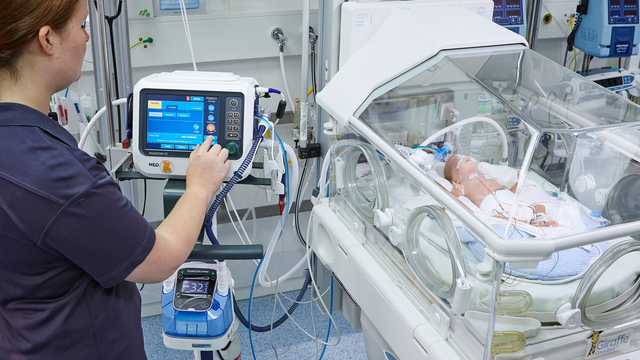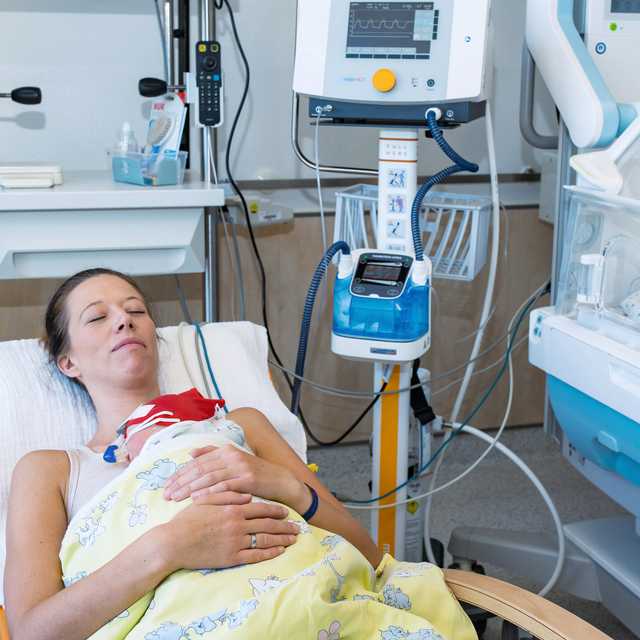

El acondicionamiento de gas respiratorio hace referencia al calentamiento y la humidificación del aire espirado o el gas respiratorio administrado. Esto puede llevarse a cabo mediante el uso de un humidificador o, de forma pasiva, con un filtro HME (intercambiador de calor y humedad).
Dado que el sistema respiratorio de los bebés prematuros y recién nacidos no suele estar desarrollado por completo o, cuanto menos, es muy sensible, es preferible utilizar sistemas de humidificación activa para este grupo de pacientes.
Reduce la resistencia de las vías aéreas
Mejora la compliance pulmonar
Profilaxis de infecciones
Permite que el cuerpo del pequeño paciente ahorre energía
La humedad es un componente muy importante del sistema respiratorio. Es esencial para el sistema de transporte mucociliar de los pulmones, ya que ayuda a eliminar las impurezas de las vías aéreas.
Durante la inspiración, el aire se calienta y humidifica en la cavidad nasofaríngea y en la tráquea. Cuando este alcanza los bronquios, se enriquece con vapor de agua.

El gas médico es frío y seco e incluso habiendo transcurrido poco tiempo desde su administración tiene un efecto considerablemente negativo en la función pulmonar y en la mucosa. Impide la distribución natural de la temperatura y la humedad, además de limitar la importante función del sistema mucociliar. A esto se suma que la mucosa tiene que compensar la influencia de los tubos de ventilación y la administración de flujos de ventilación elevados en las vías aéreas.
Por otro lado, el gas calentado y humidificado conserva la viscosidad de la mucosa y esto conlleva que se mantenga la actividad ciliar (los cilios son orgánulos filiformes que se encuentran sobre las células de la membrana mucosa).